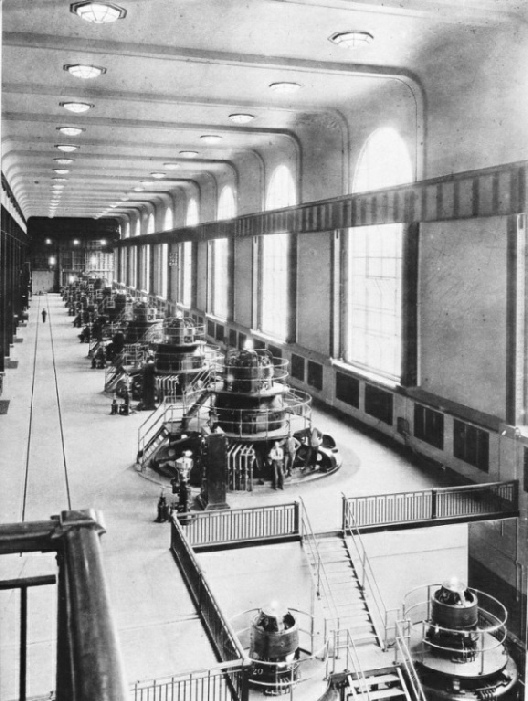

© Wonders of World Engineering 2014-




Part 1
Part 1 of Wonders of World Engineering was published on Tuesday 2nd March 1937, price 7d.
It was a bumper issue of 36 pages, all other issues being 32 pages. The issue included a superb folding colour plate showing a cutaway drawing of an Empire Flying Boat which accompanied an article with the same title. There was also a central photogravure supplement illustrating the article on Harnessing Niagara. All these are illustrated below.
The Cover
The cover shows the Oakland Bay suspension bridge under construction. At this time it was the world’s longest bridge. Its construction is described in the article on San Francisco's Great Bridges.
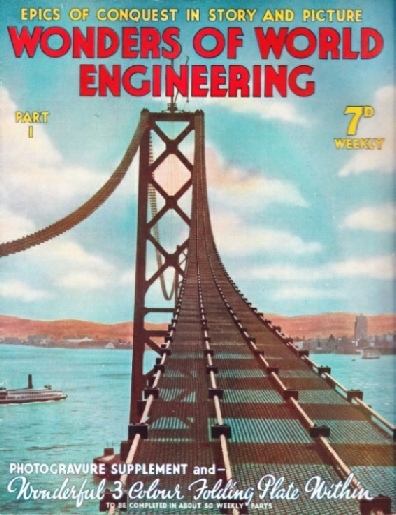
Contents of Part 1
Foreword
San Francisco's Great Bridges
A ferry service that carried 45,000,000 people across San Francisco Bay every year has been superseded by two of the biggest bridges in the world. Built at a cost of nearly £24,000,000, they are among the most spectacular bridge-building achievements ever undertaken. This chapter is the first article in the series on Linking the World’s Highways. The article covers the construction of the Oakland Bay and Golden Gate bridges.
A Giant of the Air (colour plate)
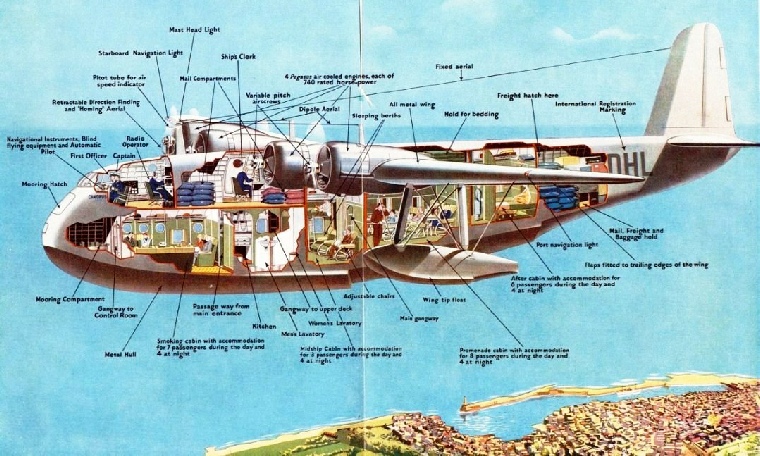
A Giant of the Air
A GIANT OF THE AIR, the new Empire flying boat Canopus is one of the twenty-eight craft designed for service on Empire air routes. The flying boat has a length of 88 feet from nose to tail and a wing span of 114 feet. She has a maximum speed of 200 miles an hour and a ceiling of 20,000 feet. Navigation and wireless transmission and reception are carried out on the upper deck, where the mail compartments are also situated. The lower deck is mainly occupied by passenger accommodation. The Canopus is driven by four Bristol “Pegasus” engines, each developing 920 horse-power. Fuel tanks with a standard capacity of 600 gallons are embodied in the wings.
Contents of Part 1 (continued)
Empire Flying Boats
Twenty-eight flying boats of advanced design, each weighing 18 tons and having a speed of 200 miles an hour, have been designed for use on important overseas air routes in the British Empire.
Harnessing Niagara
Twenty million tons of water flow hourly over Niagara Falls. The utilization of this latent power is a supreme example of mastery over Nature and an engineering feat which has made Niagara River the source of the world's greatest water-power system . This chapter is the first article in the series on the Wonders of Water Power.
Harnessing Niagara (photogravure supplement)
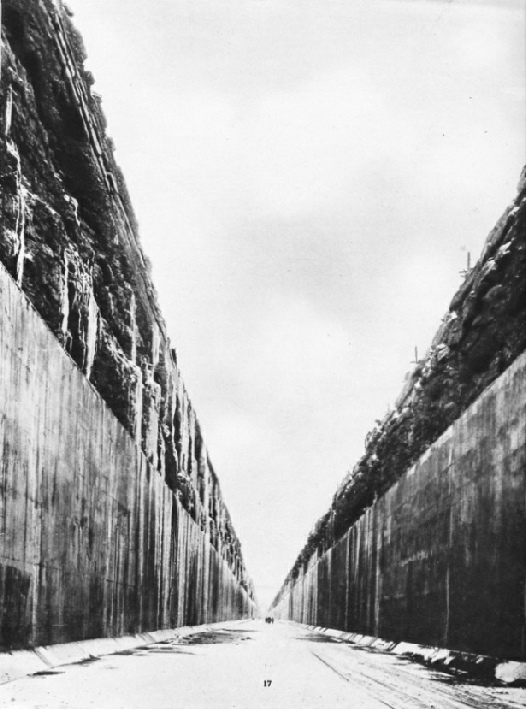
Harnessing Niagara: Photogravure Supplement
THE CONCRETE-LINED CANAL through which water is diverted from Chippawa to Queenston. The section illustrated was cut through solid rock with an over-layer of earth, and the bottom of the canal is, in places, 143 feet below ground level. More than four million cubic yards of rock were blasted and thirty million cubic yards of earth were excavated during the building of this canal.
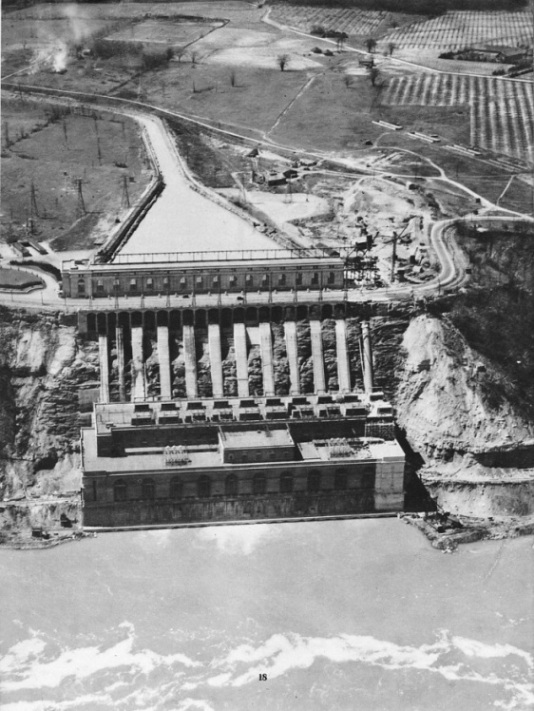
Harnessing Niagara - 2
THE POWER-HOUSE AT QUEENSTON, on the lower reaches of Niagara River, stands at the foot of a cliff 300 feet high. A waterway nearly 13 miles long brings water from Chippawa, above the Canadian Falls. The great screenhouse at the top of the cliffs at Queenston contains the entrances to ten penstocks or pipes through which the water passes down to the hydraulic turbines in the generating station. The Queenston-Chippawa scheme is the most modern and the most powerful of the hydro-electric undertakings at Niagara.
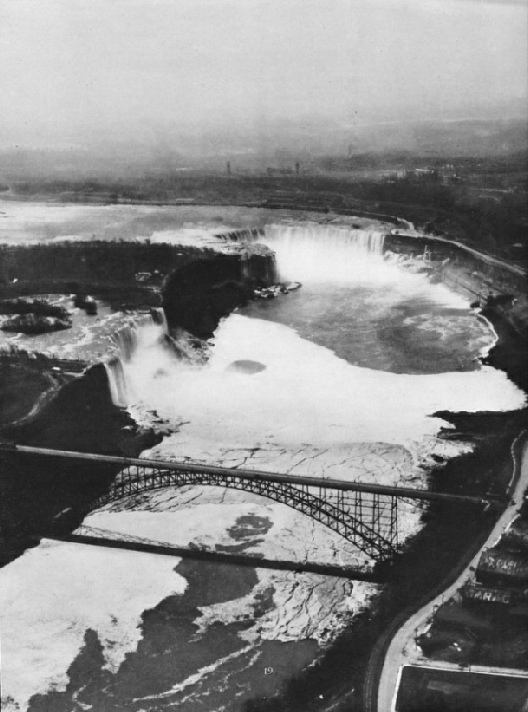
Harnessing Niagara - 3
NIAGARA'S SCENIC BEAUTY has not been marred by the huge generating stations that have been built near the Falls. Opposite Goat Island, which separates the American and Canadian Falls, is the Ontario Power Company's Station, built at the base of the cliffs. Above the Canadian Falls, near the centre of the illustration, is the Toronto Power Company's station, which overlooks the upper rapids. The road bridge in the foreground connects Canada (right) with the United States of America.
